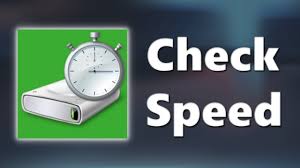Evaluating the performance of your hard drives has become crucial as storage devices continue to evolve. CrystalDiskMark is a popular disk benchmarking tool widely used to measure the speed and efficiency of HDDs, SSDs, and USB drives. While the software is well-known for its user-friendly interface and quick results, many users wonder about its reliability and accuracy, especially when it comes to testing traditional hard disk drives (HDDs). This article explores the strengths, limitations, and practical value of CrystalDiskMark for HDD performance testing, helping you decide whether it’s a tool worth trusting.
Understanding CrystalDiskMark and Its Purpose
CrystalDiskMark is designed primarily to evaluate the read and write speeds of storage devices by performing a series of tests that simulate different types of data access patterns. These include sequential reads and writes (which assess how fast large blocks of data can be transferred) and random reads and writes (which test performance with small chunks of data scattered across the disk). The software produces numerical results in megabytes per second (MB/s), providing a snapshot of a drive’s potential throughput.
Although originally intended for SSD benchmarking, CrystalDiskMark is frequently used to test HDDs as well. Since HDDs and SSDs have distinct architectures and performance characteristics, it is important to understand how these differences affect benchmarking results.
How HDDs Differ from SSDs in Performance Testing
Hard disk drives rely on spinning magnetic platters and mechanical read/write heads to store and retrieve data. This physical movement introduces latency and limits data transfer rates compared to SSDs, which use flash memory with no moving parts. HDD performance is therefore influenced by factors such as platter speed (commonly 5400 or 7200 RPM), seek time, and data fragmentation.
CrystalDiskMark’s tests, especially those involving random I/O operations, can highlight HDD weaknesses, as mechanical drives struggle with small, scattered reads and writes. In contrast, SSDs excel in random access speeds, making their benchmark results look much faster.
Understanding this fundamental difference is key to interpreting CrystalDiskMark results properly and avoiding misleading conclusions about HDD performance.
Strengths of CrystalDiskMark for HDD Benchmarking
Several aspects of CrystalDiskMark make it a useful tool for HDD testing:
Easy-to-Use Interface
CrystalDiskMark is straightforward, requiring minimal setup. Users can select the test size and number of test runs with just a few clicks, making it accessible for both beginners and advanced users.
Versatile Test Options
The software provides both sequential and random read/write tests, which together give a more complete picture of how an HDD handles different data workloads. Sequential tests reveal maximum throughput for large files, while random tests simulate typical everyday use involving many small files.
Open Source and Free
Being a free and open-source tool increases CrystalDiskMark’s popularity and trust among users. It is regularly updated to support the latest storage technologies and improve testing accuracy.
Benchmarking Across Devices
Users can compare HDD results to SSDs or USB drives to understand relative performance differences. This is especially useful when considering upgrades or troubleshooting slow disk performance.
Limitations to Consider When Using CrystalDiskMark for HDDs
Despite its strengths, CrystalDiskMark has limitations that users must recognize:
Synthetic Nature of Tests
CrystalDiskMark generates synthetic workloads that may not represent real-world usage accurately. For HDDs, actual performance depends on file system overhead, fragmentation, background tasks, and caching, none of which are fully simulated in the benchmark.
Limited Testing of Latency and IOPS
While CrystalDiskMark measures throughput well, it does not provide detailed insights into latency (delay before data transfer begins) or input/output operations per second (IOPS), which are critical for understanding HDD responsiveness in real applications.
Cache Effects Can Skew Results
Many HDDs use built-in cache buffers to temporarily hold data, which can make sequential tests appear faster than sustained speeds. CrystalDiskMark tests might finish before the cache is exhausted, giving overly optimistic results.
Test Size and Repetition Impact Accuracy
Small test file sizes or too few runs can lead to inconsistent results. HDDs require longer testing periods to stabilize performance metrics due to their mechanical nature, which CrystalDiskMark’s default settings might not provide.
Impact of Background Processes
Running CrystalDiskMark on a system with active background tasks, such as antivirus scans or disk indexing, can distort test outcomes by adding unpredictable I/O load.
Interpreting CrystalDiskMark Results for HDDs Effectively
Accurate interpretation of CrystalDiskMark results is as important as the testing process itself. The following tips help make sense of the benchmark data:
- Compare Sequential and Random Speeds: Expect HDDs to show higher sequential read/write speeds compared to random access, often by an order of magnitude or more. Large differences are normal and reflect physical limitations.
- Ignore Absolute Numbers Alone: Do not rely solely on the raw MB/s numbers. Use CrystalDiskMark results comparatively—benchmark multiple drives or test the same drive before and after maintenance (e.g., defragmentation).
- Account for Drive RPM: Faster-spinning drives generally score better in all tests. A 7200 RPM HDD should outperform a 5400 RPM drive.
- Consider Health and Age: Older HDDs or those with bad sectors may show degraded results. CrystalDiskMark can reveal such issues indirectly through unusually low speeds.
- Use Additional Tools: Complement CrystalDiskMark with diagnostic tools like SMART status checkers, latency testers, or real-world file transfer tests for a complete assessment.
Practical Scenarios for Using CrystalDiskMark on HDDs
CrystalDiskMark can be valuable in various real-world HDD evaluation scenarios:
Drive Comparison Before Purchase
Consumers can benchmark multiple HDD models to understand relative performance differences and select the best fit for their needs, especially when choosing between budget and premium drives.
Monitoring HDD Health Over Time
Regular benchmarking allows users to detect performance degradation that might indicate impending drive failure, prompting timely backups or replacements.
Testing After Maintenance or Upgrades
Following disk defragmentation, firmware updates, or system optimizations, users can verify whether performance has improved using CrystalDiskMark results.
Troubleshooting Slow Systems
Unexpected low HDD speeds may explain sluggish system behavior. CrystalDiskMark helps identify whether the disk is the bottleneck or if other components are responsible.
Alternatives and Complementary Tools to CrystalDiskMark
While CrystalDiskMark is popular, other benchmarking and diagnostic tools may offer features better suited for HDD analysis:
- ATTO Disk Benchmark: Provides detailed I/O performance at different transfer sizes, useful for understanding HDD behavior across workloads.
- HD Tune: Includes health monitoring, error scanning, and benchmarking, offering a comprehensive drive diagnostic suite.
- AS SSD Benchmark: Although focused on SSDs, it also supports HDDs and provides detailed performance results.
- Iometer: A professional-grade tool allowing customizable workload simulation for precise performance testing.
Using these tools alongside CrystalDiskMark can provide a more rounded evaluation of HDD performance.
Conclusion
CrystalDiskMark offers a quick, accessible way to measure HDD read and write speeds, making it a helpful tool for initial performance assessment and comparison. However, its synthetic tests do not capture all nuances of mechanical drive behavior and real-world usage. Cache effects, background processes, and testing parameters can skew results if not carefully managed.
In practical terms, CrystalDiskMark should be used as one component of a broader diagnostic approach rather than a definitive authority on HDD performance. Users seeking detailed latency measurements or long-term reliability insights will need complementary tools and real-world testing.





